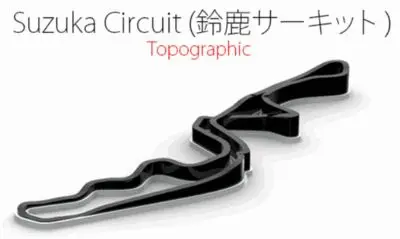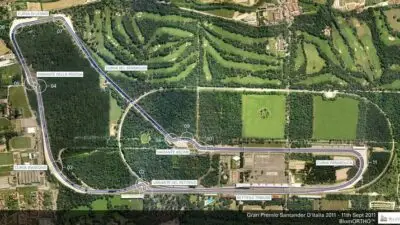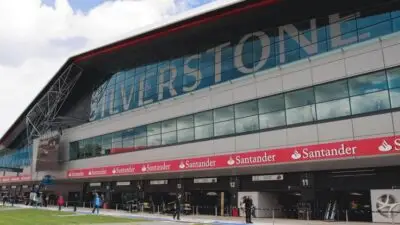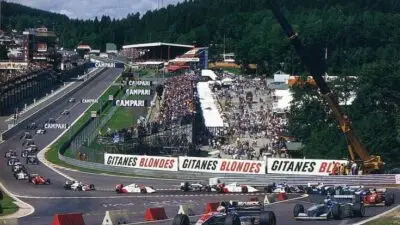Tucked away in Mie Prefecture, Japan, the Suzuka Circuit stands as one of motorsport’s most revered venues. Opened in 1962 and designed by Dutch architect John Hugenholtz, this iconic track has become a pilgrimage site for racing enthusiasts worldwide. With its challenging figure-eight layout where the track crosses over itself via an overpass, Suzuka offers drivers a unique test of skill and courage that few other circuits can match.

Owned by Honda Motor Co., Ltd., Suzuka has hosted numerous high-profile racing events over the decades, most notably the Formula One Japanese Grand Prix. The circuit’s distinctive combination of high-speed straights, technical corners, and elevation changes has earned it praise from drivers as one of the best racing tracks ever built. Beyond professional racing, visitors can experience the thrill of the track themselves through attractions like Circuit Challenger, which uses small electric cars with F1-inspired controls.
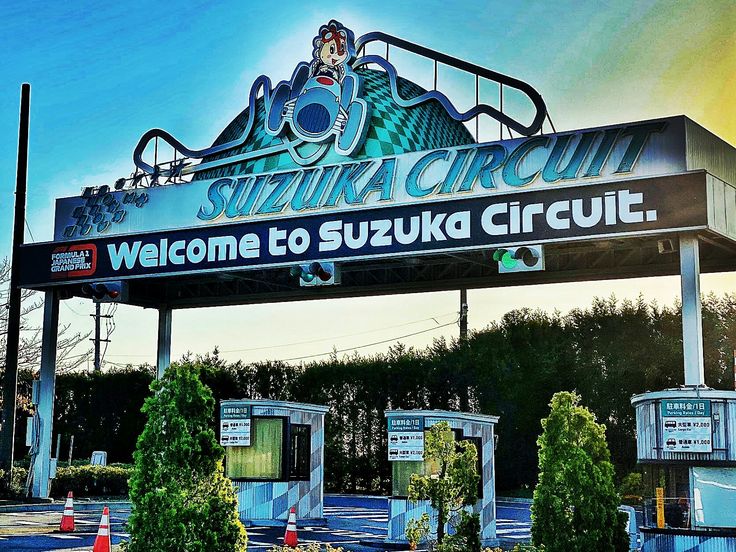
Key Takeaways
- Suzuka Circuit features a unique figure-eight layout that creates one of the most technically challenging courses in global motorsport.
- The venue has been central to Japanese motorsport culture since 1962 and continues to host prestigious international racing events.
- Visitors can experience the circuit through various activities including watching races and driving electric cars on the legendary track.
Suzuka Circuit’s Legacy and Significance

Suzuka Circuit stands as a monumental achievement in motorsport history, representing Japan’s automotive excellence and racing passion. Its unique design and challenging layout have made it a favorite among drivers and fans alike.
Origins and Vision of Soichiro Honda
Soichiro Honda, the visionary founder of Honda Motor Company, initiated plans for the Suzuka Circuit in the early 1960s. His goal was clear: create a world-class testing facility that would elevate Honda’s automotive engineering capabilities.
The circuit opened in 1962 in Mie Prefecture, Japan, initially serving as a test track for Honda vehicles. Designed by Dutch architect John Hugenholtz, the track featured a revolutionary figure-eight layout that would later become its signature characteristic.
Mr. Honda’s foresight transformed what began as a simple testing ground into one of the world’s most respected racing venues. His vision went beyond corporate interests—he aimed to foster Japan’s growing motorsport culture and showcase Japanese engineering prowess to the world.
Historical Role in Japanese Motorsport
Suzuka quickly evolved from a testing facility to Japan’s premier racing destination. It became the focal point of Japanese motorsport development during a crucial period of the country’s automotive industry growth.
The circuit hosted its first Formula 1 Grand Prix in 1987, marking Japan’s serious entry into the global racing scene. Since then, it has been instrumental in nurturing domestic racing talent and promoting motorsport culture throughout the country.
For Japanese fans and motorsport enthusiasts, Suzuka represents national pride. It has witnessed the rise of Japanese drivers, teams, and manufacturers on the international stage, helping establish Japan as a motorsport powerhouse.
Key events in Japanese motorsport history:
- First F1 Japanese Grand Prix at Suzuka (1987)
- Home races for Honda-powered F1 teams
- Development of SuperGT and Super Formula racing series
Influence on Global Racing Culture
The Suzuka Circuit’s unique figure-eight layout has challenged the world’s best drivers for decades. Its technical corners, elevation changes, and demanding sections like the famous “130R” and “Spoon Curve” have earned respect worldwide.
Suzuka has been the stage for numerous championship-deciding races, particularly the legendary battles between Ayrton Senna and Alain Prost in 1989 and 1990. These dramatic showdowns helped cement the circuit’s reputation as a true driver’s track where skill prevails over machinery.
Beyond Formula 1, Suzuka hosts international events across multiple racing disciplines. Its technical demands have influenced track design globally, with many modern circuits incorporating elements inspired by Suzuka’s balanced approach to challenge and excitement.
The circuit continues to draw racing pilgrims from around the world, serving as a living testament to Japan’s contributions to motorsport culture and engineering excellence.
Track Design and Unique Features

The Suzuka Circuit stands out in global motorsport for its distinctive design and challenging technical elements. Its configuration tests driver skill and engineering precision while providing spectacular racing action for fans.
Figure-Eight Layout
Suzuka Circuit features a unique figure-eight layout, making it one of the only tracks in the world with this configuration. Designed by Dutch architect John Hugenholtz in 1962, the track crosses over itself with an overpass, creating its distinctive shape.
This innovative design allows for a longer track within a smaller land area while offering diverse racing conditions. The figure-eight creates natural flow between sections, with the circuit measuring 5.807 kilometers (3.608 miles) in length.
The layout provides 18 corners of varying character, making it one of the most technical tracks on racing calendars. Drivers face a perfect mix of high and low-speed sections, requiring complete mastery of their vehicles.
Legendary Corners: 130R and S Curves
The 130R corner stands as one of Formula 1’s most challenging high-speed turns, named for its 130-meter radius. This left-hander demands incredible commitment from drivers who approach at speeds over 300 km/h (186 mph). Taking this corner flat-out separates the good from the great.
The S Curves (also called the “Esses”) form another iconic section at Suzuka. This sequence of five flowing corners requires precise racing lines and rewards rhythm and momentum. Drivers must perfectly position their cars through each bend to maintain speed.
Drivers also face the challenging Degner Curves, hairpin, and Spoon Curve – each presenting unique technical challenges. These corners combine to make Suzuka a true driver’s circuit that rewards bravery and precision in equal measure.
Track Modifications and Safety Innovations
Over its history, Suzuka Circuit has undergone several modifications to improve safety while maintaining its challenging character. Following FIA safety standards, runoff areas have been expanded, particularly at high-risk points like 130R.
The average speed of 229 km/h for Formula 1 cars places Suzuka alongside legendary high-speed circuits like Silverstone and Spa-Francorchamps. This speed necessitated modern safety barriers, improved gravel traps, and advanced marshal posts.
In 2003, the 130R corner was redesigned slightly to improve safety margins without sacrificing its challenging nature. Additional safety improvements include advanced track drainage systems to handle Japan’s sometimes heavy rainfall.
These modifications reflect Suzuka’s commitment to balancing its heritage as a driver’s challenge with modern safety requirements. The circuit continues to evolve while preserving the essence that makes it a favorite among competitors and spectators alike.
Major Motorsport Events at Suzuka Circuit

Suzuka Circuit hosts several prestigious racing events throughout the year that attract competitors and fans from across the globe. The track’s challenging figure-eight layout makes it a favorite among drivers and a thrilling venue for spectators.
Formula 1 Japanese Grand Prix
The Formula 1 Japanese Grand Prix stands as Suzuka’s flagship event, having first been held in 1976. This race regularly plays a crucial role in determining the F1 World Championship, with many title-deciding moments occurring on this track.
The technical nature of Suzuka, with its famous corners like the high-speed 130R and the challenging Spoon Curve, tests the skill of even the most accomplished drivers. Lewis Hamilton has enjoyed particular success here, along with other F1 legends.
Teams like Ferrari have historic connections to the circuit, with memorable victories that Japanese fans celebrate enthusiastically. The race typically takes place in autumn, often creating challenging weather conditions that add another layer of complexity to the competition.
Super GT Series
The Super GT Series features prominently in Suzuka’s annual calendar, with the circuit hosting the fifth round of this popular Japanese touring car championship. Scheduled for August 23-24, 2025, this event covers a distance of 300 km over 52 laps.
Super GT divides competitors into two classes: GT500 (for higher-performance vehicles) and GT300. Major Japanese manufacturers including Honda, Toyota, and Nissan battle for supremacy with specially developed race cars.
The series attracts top driving talent from Japan and internationally, creating exciting wheel-to-wheel racing that showcases both driver skill and automotive engineering excellence. Fans particularly enjoy the variety of cars and the close competition that regularly produces unexpected results.
Endurance Racing: Suzuka 8 Hours
The Suzuka 8 Hours stands as one of motorcycling’s most prestigious endurance races. First held in 1978, this grueling event tests both riders and machines over eight hours of continuous racing in often sweltering summer conditions.
Teams typically consist of three riders who alternate stints on the motorcycle. The race has particular significance for Japanese manufacturers Honda, Yamaha, Kawasaki, and Suzuki, who view victory here as a matter of national pride.
The FIA-sanctioned event forms part of the Endurance World Championship calendar. The physical demands on riders are extreme, with cockpit temperatures sometimes exceeding 50°C (122°F). Strategic elements like pit stops, tire changes, and fuel management often prove as important as raw speed in determining the victor.
Challenges and Safety Evolution

Suzuka Circuit has faced significant safety challenges throughout its history, prompting continuous improvements in response to incidents and changing motorsport standards. The track’s unique figure-8 layout and high-speed sections create distinctive safety considerations that have evolved over decades.
Notable Incidents and Safety Concerns
Suzuka Circuit has witnessed several serious incidents since its opening in 1962. The track’s high-speed nature, particularly the 130R corner and the fast esses section, has created inherently dangerous conditions for drivers. As a demanding circuit that tests drivers with both clockwise and anti-clockwise sections, Suzuka has tragically seen 17 driver fatalities since the 1960s.
Weather has played a significant role in safety concerns at Suzuka. The circuit’s location makes it susceptible to extreme weather conditions, including typhoons and heavy rainfall. These conditions have led to numerous race postponements and safety car deployments over the years.
The circuit’s original design, while revolutionary, featured limited runoff areas and safety barriers that did not meet modern standards. This created a significant challenge for track officials and the FIA to address.
Impact of Jules Bianchi’s Accident
The 2014 Japanese Grand Prix marked a tragic turning point when Formula 1 driver Jules Bianchi suffered a fatal accident at Suzuka. During wet conditions, Bianchi’s car slid off the track at Turn 7 and collided with a recovery vehicle already attending to another crashed car.
This accident prompted immediate reassessment of safety protocols during wet conditions and recovery vehicle deployment procedures. The FIA conducted a thorough investigation that led to the implementation of the Virtual Safety Car (VSC) system, which requires drivers to significantly reduce speed in specific track sections.
Bianchi’s accident also accelerated the development and mandatory implementation of the Halo cockpit protection system, now standard across Formula 1 and other motorsport categories. This protective structure has since saved multiple drivers from serious injuries.
FIA Regulations and Track Upgrades
Following major incidents, the FIA has worked closely with Suzuka Circuit to implement comprehensive safety improvements. These include expanded runoff areas, repositioned barriers, and improved impact-absorbing technologies throughout the track.
The circuit has undergone continuous architectural enhancements reflecting the latest advancements in racing technology and safety standards. Key modifications include:
- Redesigned gravel traps and asphalt runoff areas
- Enhanced drainage systems to improve wet weather safety
- Updated barrier configurations at high-risk corners
- Improved marshal post positioning and communications
Suzuka now implements advanced safety measures and emergency preparedness protocols that reflect modern motorsport standards. These upgrades demonstrate the circuit’s commitment to balancing its challenging character with contemporary safety requirements.
The FIA continues to evaluate the circuit annually, requiring further modifications as safety standards evolve and new risks are identified.
Suzuka Circuit’s Place in Japanese Culture

Suzuka Circuit has evolved from a simple racetrack to a cultural landmark deeply embedded in Japanese society. It represents Japan’s technological prowess and serves as a gathering place for communities across generations.
Suzuka City and Local Community
Suzuka Circuit has transformed the identity of Suzuka City, putting this once-quiet area on the global map. The circuit’s presence has shaped local traditions, with many families passing down their passion for motorsport through generations.
Local schools often incorporate field trips to the circuit’s traffic education center, teaching children about road safety in an engaging environment. This educational aspect strengthens the bond between residents and the facility.
Annual circuit events have become community celebrations. During race weekends, locals open their homes to visitors, creating a unique hospitality culture that showcases Japanese omotenashi (hospitality spirit).
The circuit also provides employment opportunities for residents, creating a sense of pride and ownership among locals who consider it their community’s crown jewel.
Contribution to Mie Prefecture’s Economy
Suzuka Circuit significantly boosts Mie Prefecture’s economy, particularly in the tourism sector. International events like the Japanese Grand Prix bring thousands of visitors who fill hotels, restaurants, and shops throughout the region.
The economic impact extends beyond race weekends. Year-round attractions at the circuit complex, including:
- Motopia amusement park
- Racing simulators
- Motorsport museums
- Themed restaurants and shops
These facilities draw steady tourist traffic throughout the year, creating stable revenue streams for local businesses.
Manufacturing partnerships between the circuit and local industries have flourished, with specialized automotive parts producers setting up operations nearby. This industrial ecosystem has positioned Mie Prefecture as a center for motorsport innovation in Japan.
Role in Motorsport Fandom
Suzuka has cultivated a unique motorsport culture in Japan, blending traditional Japanese values with racing excitement. Fans demonstrate exceptional etiquette—meticulously cleaning their seating areas after events and showing remarkable respect toward drivers.
The circuit hosts grassroots racing series that nurture local talent, creating heroes for Japanese motorsport enthusiasts. Many professional drivers cite their first Suzuka experience as their inspiration to pursue racing careers.
Fan rituals unique to Suzuka have emerged over decades. These include specialized chants, handmade banners with elaborate designs, and distinctive viewing traditions at specific corners like the famous 130R.
Digital communities centered around Suzuka have connected Japanese fans with international enthusiasts, creating cultural exchanges that extend well beyond motorsport discussions.
Future Prospects and Continuing Legacy

Suzuka Circuit stands at a pivotal moment in its history, securing its place in Formula 1 while adapting to modern motorsport demands. The track’s evolution balances respect for tradition with necessary innovation for future sustainability.
Balancing Heritage and Modernization
Suzuka Circuit has secured its Formula 1 future until 2029 through a five-year extension of its contract. This agreement demonstrates Formula 1’s recognition of the circuit’s historical significance and unique character.
The Honda-owned facility faces the challenge of preserving its iconic figure-eight layout while implementing modern safety standards required by the FIA. Recent track modifications have focused on run-off areas and barrier improvements without compromising the circuit’s challenging nature.
Tsuyoshi Saito, Suzuka’s president, has committed to future-proofing the venue through strategic upgrades. These include improved spectator facilities, enhanced digital infrastructure, and modernized pit buildings that meet current F1 standards.
Financial Pressures and Adaptation
The rising costs of hosting Formula 1 events present significant challenges for traditional venues like Suzuka. Annual hosting fees now reach into the tens of millions, putting pressure on circuit management to maximize revenue streams.
Suzuka has responded by diversifying its offerings beyond F1. The circuit now hosts:
- Year-round driving experiences
- Corporate events and exhibitions
- Motorcycle Grand Prix events
- National racing series
The facility is increasingly focusing on sustainability initiatives as a core part of its business model. This approach includes renewable energy installations, waste reduction programs, and serving as a testbed for Honda’s mobility innovations.
Global Position Among Iconic Circuits
Suzuka maintains its reputation as one of motorsport’s most technically demanding tracks. Drivers consistently rank it among their favorite circuits due to its unique combination of high-speed corners, elevation changes, and technical sections.
The circuit’s commitment to Japanese motorsport culture strengthens its global position. As other traditional venues face uncertainty, Suzuka’s contract extension provides stability in an evolving Formula 1 calendar that increasingly favors new, purpose-built facilities.
Competition from potential new Japanese venues, including a proposed Osaka street circuit, has pushed Suzuka to emphasize its heritage and authenticity. This competitive pressure has accelerated modernization efforts while reinforcing the circuit’s unique position in motorsport history.
Frequently Asked Questions

Visitors to Suzuka Circuit often have practical questions about attending events, transportation, and accommodations. The following information addresses common inquiries to help racing enthusiasts make the most of their experience at this iconic venue.
What types of events can be attended at the Suzuka Circuit throughout the year?
Suzuka Circuit hosts a diverse calendar of motorsport events beyond just Formula 1. The venue is home to the Formula One Japanese Grand Prix, which has been held there since 1987.
The circuit also features the “Coca Cola Zero” Suzuka 8hours Endurance Road Racing competition, a prestigious motorcycle endurance event. Both qualifying days and race days require tickets for attendance.
Throughout the year, visitors can enjoy various automobile and motorcycle races that cater to different motorsport interests. The track maintains a full events calendar that spans multiple racing disciplines.
How can one purchase tickets for events held at Suzuka Circuit?
Tickets for the Formula 1 Japanese Grand Prix and other major events can be purchased through the official Suzuka Circuit website. For Formula 1 specifically, there are specialized ticket services that provide comprehensive options.
It’s important to note that even for qualifying days of major events like F1 and the Suzuka 8hours Endurance Race, race tickets are required. Advance booking is highly recommended, especially for international visitors.
First-time attendees should review the ticket purchasing guidelines to understand the different seating options and viewing areas available around the circuit.
What are the unique features of Suzuka Circuit that distinguish it from other race tracks?
Suzuka Circuit is renowned for its unique figure-eight layout, making it one of the only circuits globally with this distinctive design. The track crosses over itself with an overpass, creating a challenging and technical racing experience.
Built in 1962 by Honda Motor Company as a test facility, the circuit spans 5.807 km (3.608 mi) and has become the heart of Japanese motorsport culture.
The track has witnessed numerous iconic moments in racing history, including the Senna-Prost clashes in 1989/90, Michael Schumacher’s first Ferrari title in 2000, and Kimi Raikkonen’s stunning last-lap win from 17th place in 2005.
How does one travel from Osaka to the Suzuka Circuit using public transportation?
From Osaka, visitors can take a train to Nagoya Station and then transfer to the Kintetsu Line bound for Shiroko Station. From Shiroko, regular shuttle buses operate to the circuit during major events.
Alternatively, travelers can take the JR Line to Suzuka Circuit Ino Station, which is about a 20-minute walk from the track. During F1 weekends and other significant events, dedicated shuttle services are typically increased.
Transportation information is particularly important for international visitors, and planning ahead is essential as the circuit is located in Mie Prefecture, requiring some travel time from major cities.
Can visitors participate in driving experiences at the Suzuka Circuit, and if so, what options are available?
Suzuka Circuit offers various driving experiences for visitors who want to experience the track firsthand. These range from go-karts at the Suzuka Circuit Racing School to more advanced driving programs.
The Suzuka Circuit Driving Experience allows visitors to drive sports cars on portions of the famous track under professional supervision. These experiences must be booked in advance and have specific requirements regarding driving licenses.
For those who prefer a less intense experience, the circuit’s amusement park features racing simulators that provide a taste of the track without actually driving on it.
What accommodation options are available for attendees during major racing events at the Suzuka Circuit?
The Suzuka Circuit Hotel is located on the grounds and offers the most convenient accommodation option for race attendees. However, it books up very quickly for major events like the F1 Grand Prix.
Nearby cities such as Nagoya, Yokkaichi, and Tsu offer additional lodging options with transportation connections to the circuit. These areas provide more accommodation choices at varying price points.
For F1 weekends and other significant events, booking accommodations months in advance is strongly recommended as the entire region experiences high demand from domestic and international visitors.
